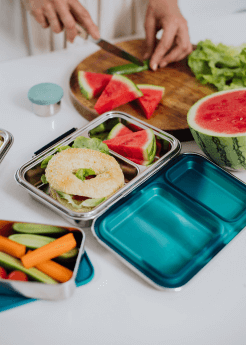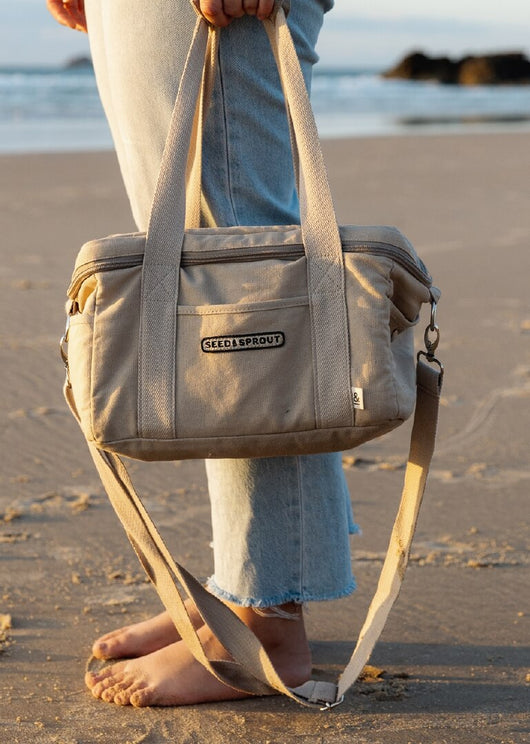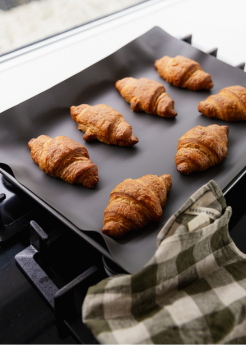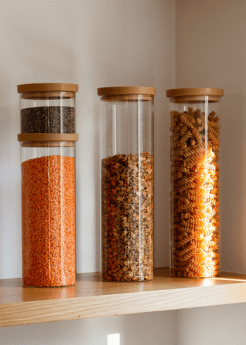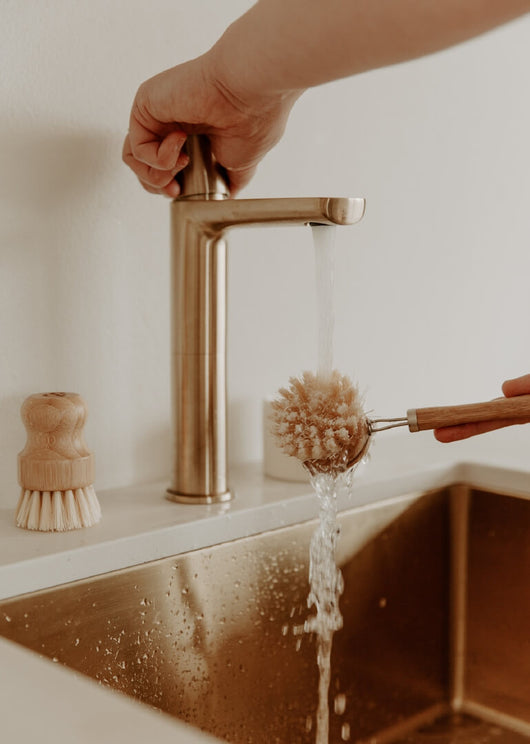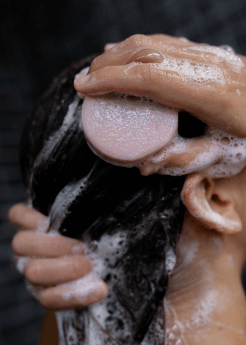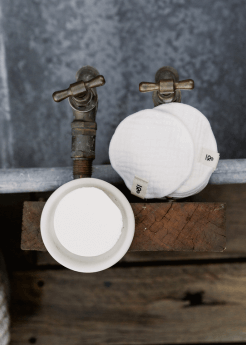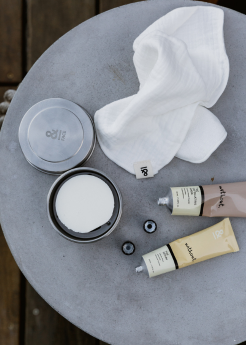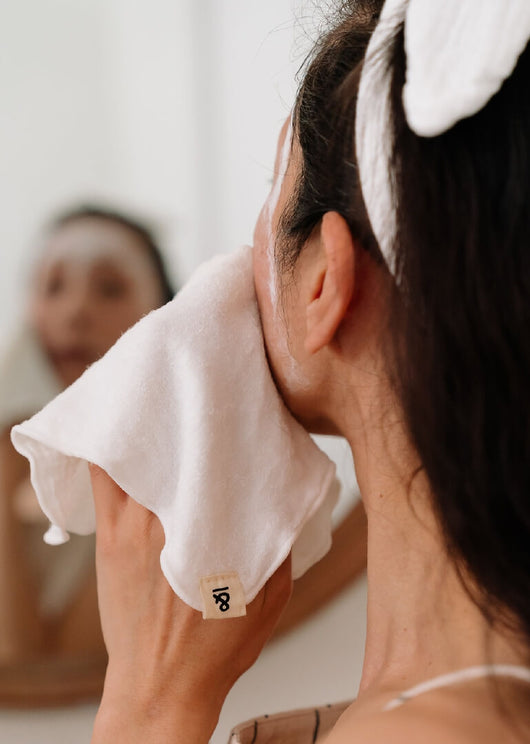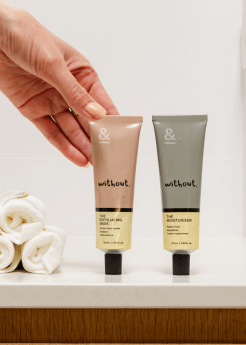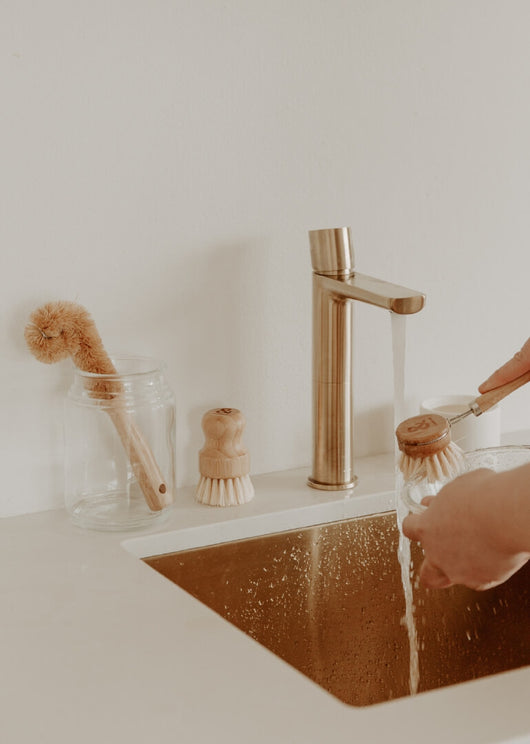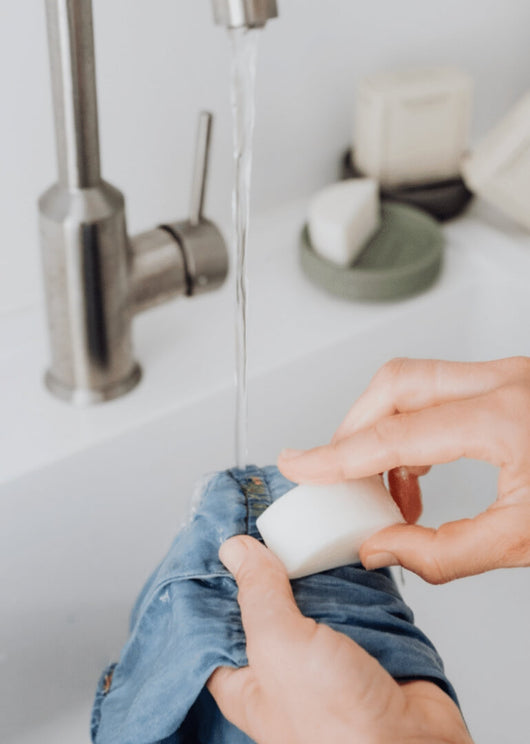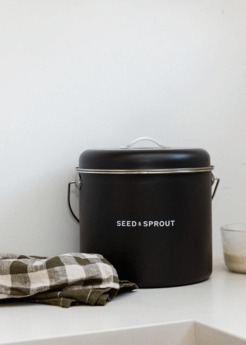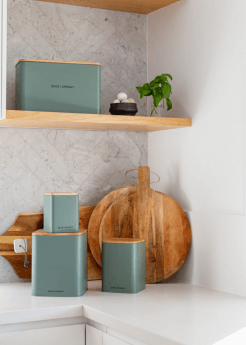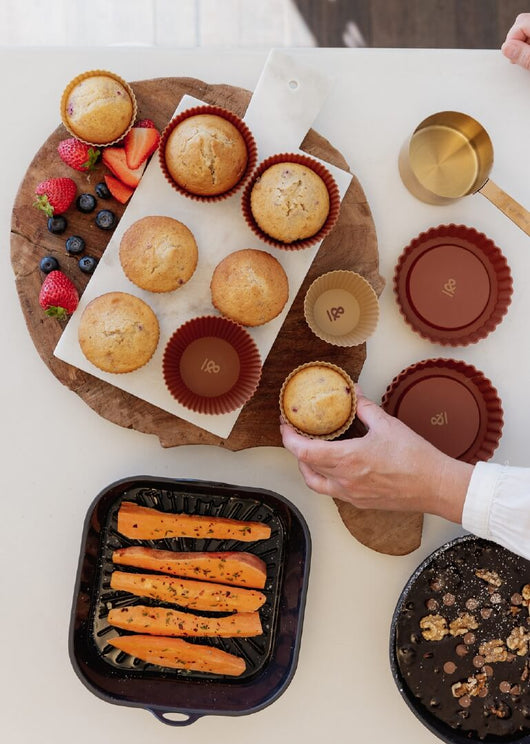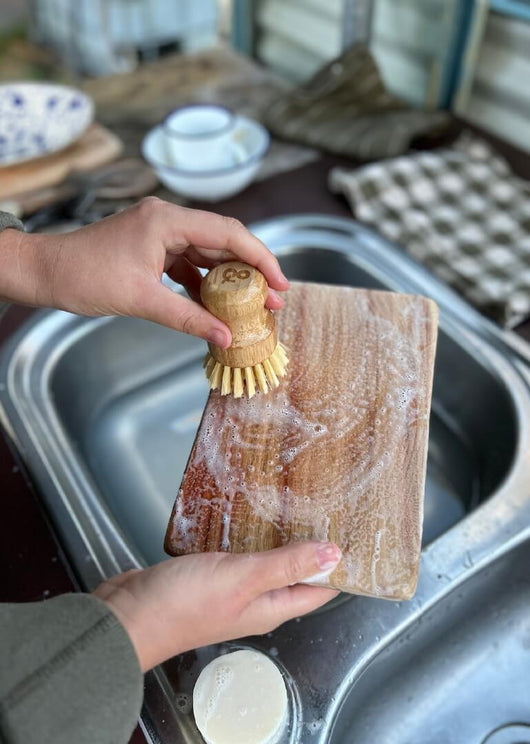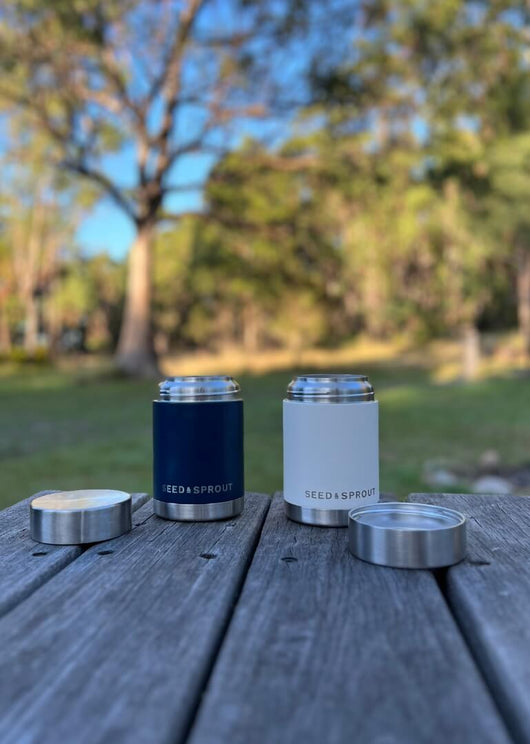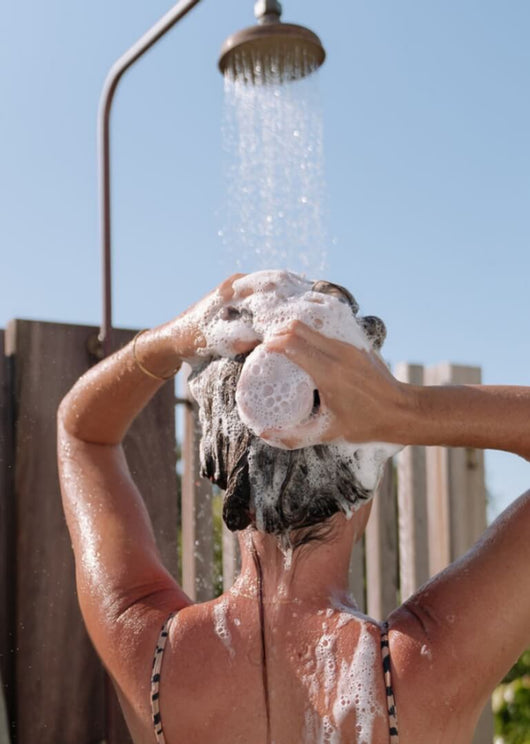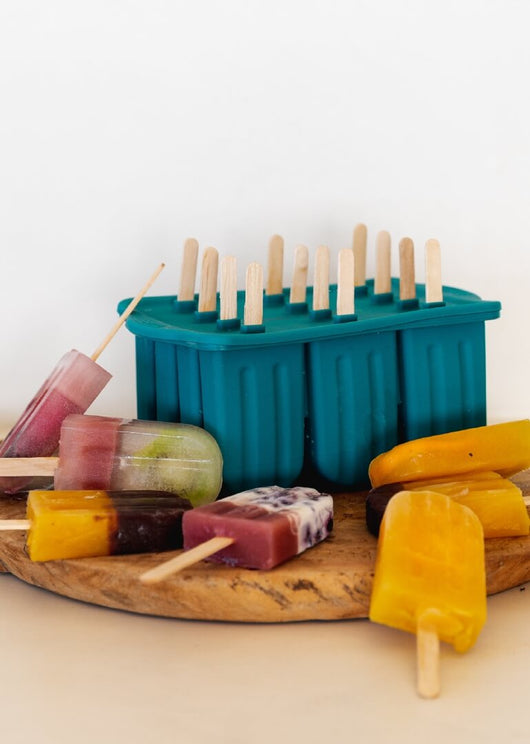No hidden nasties & definitely no hidden agenda
Ingredients Glossary
Your A - Z Guide
Activated Charcoal
What it does:
This charcoal actively cleanses and detoxifies the skin by drawing out dirt and oil. Its antibacterial powers make it a must-have ingredient for oily or acne-prone skin.
How it works:
Activated charcoal is extremely porous and absorbent, giving it the ability to draw out impurities and toxins from the skin, leaving you with a clearer and healthier complexion.
Avocado Oil (ACO)
What it does:
This superfood oil nourishes and hydrates skin with its fat-soluble vitamins and fatty acids. With topical application, avocado oil significantly reduces inflammation while simultaneously promoting collagen synthesis.
How it works:
Avocado oil is a potent source of vitamins A, D and E. It is also packed with antioxidants and essential fatty acids to help protect your skin from damage.
Behentrimonium Methosulphate (Non-Palm)
What it does:
Behentrimonium methosulphate acts as a conditioning and anti-static agent, making it the perfect addition for hair care products.
How it works:
As a cationic conditioner, behentrimonium methosulphate is a positively charged molecule, allowing it to bond to and neutralise the negative charge of hair fibres. By reducing the overall charge of the hair, static and frizz is significantly reduced.
Behenyl Alcohol
What it does:
Behenyl alcohol acts as an emulsifier and thickener, giving body, structure and stability to our products.
How it works:
Not to be confused with ethanol alcohol, this fatty alcohol acts as a product texturiser and softener. Its hydrophilic (water-loving) heads and lipophilic (oil-loving) tails enable the oil held in the product to seamlessly combine with wet hair and skin.
Betaine
What it does:
Extracted from sugar beets, betaine is a natural osmoprotectant that smoothes and protects hair. Betaine helps to reduce frizz and increase shine, all while reinforcing the scalps natural barrier function.
How it works:
Betaine molecules are deposited onto the hair surface and deeply penetrate the hair cortex. Within the cortex, betaine is able to bind to damaged sections and actively repair them.
Candelilla Wax
What it does:
Candelilla wax gives body and structure to a product. It also acts as a shield to help protect against environmental stressors.
How it works:
This firm wax has the ability to form microcrystalline structures within a product, improving its uniformity and stability. This crystal lattice also helps to suspend zinc oxide within formulas.
Castor Oil
What it does:
As a humectant, castor oil helps to lock in the natural moisture of the skin, keeping it hydrated from the inside out.
How it works:
Packed with fatty acids and vitamin E, castor oil provides moisture to the skin as well as preventing Trans-Epidermal Water Loss (TEWL). Vitamin E helps to correct uneven skin tone and acts as a powerful antioxidant while the essential fatty acids improve skin texture.
Castor Refined Oil
What it does:
This rich emollient acts as a humectant, reducing water loss in the skin and lips.
How it works:
Packed with ricinoleic acid, castor oil is effective in inhibiting the growth of harmful microbes. Castor oil also contains linoleic acid (Omega 6) to help soothe and moisturise the skin.
Chamomile Leaf Extract
What it does:
This soothing plant extract has been historically used in the topical treatment of irritated and inflamed skin, including the scalp.
How it works:
Chamomile flowers contain a myriad of bioactive phytochemicals that have anti-oxidant, antimicrobial, and anti-inflammatory properties. Keeping your scalp clean, calm and soothed.
Citrus Medica Limonum (Lemon) Peel Oil
What it does:
Refreshing and uplifting, lemon essential oil adds another dimension to our products.
How it works:
Lemon oil is naturally antibacterial. Not only does it smell fresh, it can also help keep your hair and skin clean and healthy.
Clay (Kaolin)
What it does:
Kaolin clay minerals provide potent anti-inflammatory, antibacterial and wound-healing benefits. It helps to clarify skin, improving the appearance of the complexion.
How it works:
This type of natural clay has a strong affinity to dirt and oils in the skin and on the hair fibres due to its porous nature. Kaolin is able to absorb toxins, leaving your hair and skin clean and detoxified.
Cocoa Butter Pellets
What it does:
Extracted from cocoa seeds, cocoa butter nourishes dry skin and lips. Its rich, creamy texture fills gaps between cells, locking in moisture.
How it works:
Cocoa butter is a rich source of vitamin E and fatty acids. When applied to the skin, it forms an occlusive barrier to help reduce Trans-Epidermal Water Loss (TEWL).
Coco-Caprylate/Caprate (Contains Derivatives of RSPO Palm Oil)
What it does:
Coco-caprylate/caprate is an extremely light emollient that provides hydration without the greasy skinfeel.
How it works:
This bio-compatible oil has the ability to penetrate deep into the skin to hydrate from the inside out.
Coconut Cream
What it does:
Extracted from sugar beets, betaine is a natural osmoprotectant that smoothes and protects hair. Betaine helps to reduce frizz and increase shine, all while reinforcing the scalps natural barrier function.
How it works:
Betaine molecules are deposited onto the hair surface and deeply penetrate the hair cortex. Within the cortex, betaine is able to bind to damaged sections and actively repair them.
Coconut Refined Oil
What it does:
Versatile and hydrating, coconut oil has a rich emolliency to help soothe and nourish.
How it works:
Coconut oil possesses powerful anti-inflammatory mechanisms that act on the skin's inflammatory response at the gene expression level. When applied topically, this vegetable oil demonstrates its ability to alter cytokine production levels in inflamed skin cells while at the same time improving skin barrier function.
Corn Starch
What it does:
Corn starch has the ability to absorb large quantities of oil and sebum, giving your hair that fresh and clean feeling.
How it works:
Starch granules are excellent at trapping water and oil. The swollen starch molecules create a soft film that leaves hair feeling dry, soft and silky.
Decyl Glucoside (Non-Palm)
What it does:
Decyl glucoside is a mild sugar surfactant that acts as a foam booster, foam stabiliser, and viscosity booster.
How it works:
This sulphate-free surfactant forms micelles around dirt and excess oil on the skin and hair, providing an effective cleansing mechanism.
Eucalyptus Oil
What it does:
Eucalyptus is a potent antibacterial agent, providing natural protection against harmful microbes.
How it works:
Eucalyptol (1, 8-cineole) is the active ingredient of the eucalyptus oil, responsible for its various pharmacological actions.
Glycerin (Non-Palm)
What it does:
Glycerin is a humectant with the ability to retain and preserve moisture. It helps to prevent Trans-Epidermal Water Loss (TEWL) in the skin, keeping skin hydrated and moisturised.
How it works:
Glycerin is a hygroscopic substance, meaning it can readily attract and absorb moisture from its environment. This water retention enables glycerin to re-hydrate the skin, effectively improving the skin's overall appearance.
Guar Gum (Guar Hydroxypropyltrimonium Chloride)
What it does:
Guar hydroxypropyltrimonium chloride is a naturally-derived guar gum that gives conditioning benefits to surfactant-based products.
How it works:
Being cationic (positively-charged) in nature, this guar gum associates with negatively-charged molecules such as anionic surfactants and damaged hair. This association allows the guar gum to reduced the harshness of surfactants while facilitating the deposition of active ingredients.
Hemp Seed Virgin Oil
What it does:
Hemp seed oil is made from the seeds of hemp plants.
How it works:
Hemp seed oil contains high levels of essential fatty acids including omega 3, 6, and 9, all of which help to repair the skin barrier function and prevent Trans-Epidermal Water Loss (TEWL).
Inulin Powder
What it does:
Inulin is a vegetable-derived polysaccharide that acts as a prebiotic for healthy bacteria. It helps to balance the skin's microbiome, reducing the amount of harmful bacteria. Good bacteria are play a key role in overall skin health.
How it works:
As a prebiotic, inulin is a food source for good bacteria throughout the body. Applying inulin topically promotes the proliferation of beneficial bacteria, ultimately reducing the amount of bad bacteria, including P. acnes, on the skin. This restores balance to the microbiome, contributing to healthy skin function.
Iron Oxides - Black, Red and Yellow
What it does:
Iron oxides are primarily used to tint skincare products, sunscreens in particular. Combining various iron oxide colours allows formulators to create complexion-complementary shades.
How it works:
Sunscreens formulated with iron oxides provide enhanced protection against blue light, especially when combined with zinc oxide.
Isostearic Acid (Ecocert)
What it does:
Isostearic acid is a liquid fatty acid created from oleic acid. Its primary function is to stabilise inorganic pigments such as zinc oxide and iron oxides.
How it works:
This ingredient possesses good thermal and oxidative stability, preventing the degredation and agglomeration of inorganic pigments.
Jojoba oil
What it does:
Possessing powerful moisturising properties, jojoba oil also boasts anti-microbial, anti-inflammatory and analgesic properties. Skin is left hydrated, soothed and nourished.
How it works:
Jojoba oil has a wax ester composition similar to that of human sebum, allowing it to effectively repair compromised skin's natural barrier function.
Kakadu Plum Extract (Terminalia Ferdinandiana Extract)
What it does:
Kakadu plum offers a rich source of vitamin c, a powerful antioxidant that promotes bright, clear and glowing skin.
How it works:
Vitamin c targets free radicals in the skin, preventing damage caused by photoaging and other environmental stressors. This is extremely beneficial for skin suffering from inflammation and redness.
Lemon Myrtle Essential Oil (Backhousia Citriodora)
What it does:
Lemon myrtle oil has an uplifting and pleasant aroma. It also possesses potent antimicrobial properties, making it the perfect addition to Seed & Sprout's care products.
How it works:
Citral, the primary aroma molecule of lemon myrtle oil, is responsible for inspiring feelings of calm and positivity. It also functions as an antibacterial, anti-fungal and antiviral agent.
Lime Oil (Citrus Aurantifolia (Lime) Oil)
What it does:
Possessing a tart, citrus scent, lime oil awakens the senses and uplifts the mood.
How it works:
Limonene and beta-pinene are the primary constituents of lime oil, contributing to its zesty and tangy aroma.
Medium Chain Triglycerides (coconut derived)
What it does:
Caprylic/capric triglyceride (CCT) is a light emollient that is rich in medium chain triglycerides (MCTs). MCTs are a group of fatty acids that are essential for skin hydration and moisturisation. MCT can help the skin to fight against environmental stress, free radicals as well as dryness and acne caused by bacteria and dirt.
How it works:
MCT-rich oils have shown good antibacterial and anti-fungal properties. The medium chain fatty acids have the ability to disrupt bacterial and fungal cell membranes, causing membrane lysis and cell death.
Mentha Viridus Spearmint (Leaf) Oil
What it does:
Spearmint oil boasts a complex aroma of sweet mint and fresh herbs. Commonly used to freshen and cleanse, spearmint oil uplifts the mood and stimulates the senses.
How it works:
With the main components being carvone and limonene, spearmint oil possesses antimicrobial properties.
Moroccan Argan Oil (Argania Spinosa Kernel Oil)
What it does:
This nutrient-rich oil is used to enhance hair lustre and repair damaged fibres, leaving the hair soft, smooth and hydrated.
How it works:
Argan oil is composed of 80% mono-unsaturated and 20% saturated fatty acids. This composition provides argan oil with its unique nourishing properties.
Natural Wax Jelly (Vegan Friendly)
What it does:
This natural blend of oils and waxes was designed to mimic the function of petroleum jelly. It is ultra-hydrating and non-greasy, providing our products with good structure and moisturising properties.
How it works:
This blend has an occlusive nature that enables the formation of a protective barrier on the skin, protecting the cells from moisture loss. This makes it perfect for dry and sensitive skin.
Peppermint Oil (Mentha Piperita)
What it does:
Peppermint oil is an essential oil extracted from the leaves of the mentha piperita plant. Its fragrance profile is one of freshness, cleanliness and health.
How it works:
Peppermint oil comprises of a complex blend of aroma molecules, adding another dimension to our products.
Peppermint (Cornmint) Essential Oil – Certified Organic
What it does:
Cornmint has a very similar fragrance profile to peppermint. Its minty and herbaceous aroma leaves you feeling fresh and clean, both mentally and physically.
How it works:
Cornmint oil has a much higher content of menthol than peppermint oil, giving it a much stronger minty aroma. Like other essential oils, it also boasts antimicrobial properties.
Pink Grapefruit Oil (Citrus Paradisi Oil)
What it does:
Pink grapefruit oil is sharp and fresh is aroma, with potent citrus notes. Its high concentration of limonene contributes to its ability to reinvigorate and revitalise.
How it works:
Like other citrus essential oils, pink grapefruit oil acts as a potent antibacterial and anti-fungal agent, giving it a natural cleansing ability.
Polyglyceryl-3 Polyricinoleate (Ecocert)
What it does:
This fatty acid ester acts as an emulsifier for water-in-oil emulsions, perfect for holding sunscreens together.
How it works:
Emulsifiers posses a hydrophilic (water-loving) part and a lipophilic (oil-loving) part. This enables the emulsifier to reduce the surface tension between the oil and water phases, allowing them to hold together more strongly.
Potassium Sorbate
What it does:
Potassium sorbate is a food-grade preservative that inhibits the growth of yeasts, moulds and bacteria.
How it works:
Potassium sorbate has the ability to disrupt the function of the outer cell membrane of yeast and mould, effectively killing them.
Pro-Vitamin B5 (d-Panthenol)
What it does:
D-panthenol is a moisturising agent that provides benefits for both skin and hair. Skin and scalp are hydrated and soothed, while hair fibres are conditioned, reducing the amount of split ends and damage.
How it works:
Panthenol, the biologically active alcohol analogue of pantothenic acid is a pro-vitamin of the B-complex group that is a normal constituent of skin and hair. When applied topically, panthenol is converted to pantothenic acid, a component of coenzyme A and holo-fatty acid synthase that is essential to normal epithelial function.
Red Clay (Hematite)
What it does:
As a clay, hematite is extremely porous, giving it the ability to absorb dirt and impurities from the skin and hair. After use, skin and hair feels thoroughly cleansed and refreshed.
How it works:
Crystal structures make up this red clay, creating a lattice formation that is full of gaps and holes. Dirt and oil becomes trapped within this structure and is removed from the skin and hair when washed.
Rice Bran Wax
What it does:
Rice bran wax is extracted from the bran oil of rice and helps gives body and structure to a product. It also acts as a shield to help protect against environmental stressors.
How it works:
As well as providing structure, rice bran wax is packed full of fatty acids, squalene and phospholipids, making it bio-compatible to human skin.
Rose Geranium Oil
What it does:
Rose Geranium Oil smells fantastic and it also provides anti-inflammatory, antibacterial, anti-fungal and anti-oxidant benefits to the skin and scalp.
How it works:
Rose Geranium Oil has been shown to help reduce inflammation by inhibiting the inflammatory response in the skin. It also acts to control unwanted bacterial and fungal growth, helping with dandruff.
Rosemary Leaf Extract
What it does:
Rosmarinus officinalis extract has potent antioxidant, anti-inflammatory and antibacterial properties to help soothe and cleanse the hair fibres and scalp.
How it works:
High levels of water-soluble rosmarinic acid give Rosemary powerful anti-inflammatory effects.
Rosemary Oil (Rosmarinus Officinalis)
What it does:
Rosmarinus oil has potent antioxidant, anti-inflammatory and antibacterial properties.
How it works:
Rosemary oil has the chemicals 1,8 Cineole and alpha pinene as its main constituents, giving this herbal oil its ability to clean and disinfect.
Shea Butter (Butyrospermum Parkii)
What it does:
Shea butter is a naturally rich emollient that deeply nourishes and hydrates the skin, scalp and hair. It helps to retain the skin's natural moisture, leaving it feeling supple and healthy.
How it works:
Rich in fatty acids, vitamins and antioxidants, shea butter reinforces the skin's natural barrier function. By facilitating barrier repair, Trans-Epidermal Water Loss (TEWL) is reduced and skin is hydrated from the inside-out.
Silica
What it does:
Silica absorbs sweat and oils from the skin, transforming a greasy skin feel to a dry and soft skin feel.
How it works:
Silica particles are extremely porous and help to absorb sweat and excess oils from the skin. Silica also provides a soft, creamy skin feel to our products.
Sodium Bicarbonate – Alkalis
What it does:
Sodium bicarbonate is a powerful cleaning agent that cuts through dirt and grease when mixed with water for effective removal. It also balances the skin's pH, making it inhospitable for harmful bacteria.
How it works:
Sodium bicarbonate is alkaline in nature, giving it the ability to neutralise acids. This function enhances the cleansing ability of our products.
Sodium Chloride (Sea Salt)
What it does:
Sodium chloride, or sea salt interacts with anionic surfactants, giving shampoos and washes improved viscosity and enhanced creaminess.
How it works:
Sodium chloride is a natural and easy way to thicken a surfactant-based product while also improving its stability and texture.
Sodium Cocoate (Saponified Coconut Oil)
What it does:
Sodium cocoate is a mild surfactant and foaming agent that gently cleanses skin and hair without damaging the skin barrier function.
How it works:
Surfactants form micelles around dirt and excess oil, allowing the debris to be washed away with water.
Sodium Cocoyl Isethionate (Non-Palm)
What it does:
Sodium cocoyl isethionate is an anionic surfactant derived from coconut fatty acid. It is a mild surfactant that provides gentle cleansing without stripping the skin barrier.
How it works:
With the formation of micelles, this mild surfactant effectively removes dirt and oil from the skin and hair.
Soya Wax – Cosmetic Waxes
What it does:
Hydrogenated soybean oil, or soya wax has a relatively low melting point and is beneficial in products intended to melt when put in contact with human skin. It provides structure and body without increasing the firmness too much.
How it works:
Soya wax creates a soft, rich and buttery skin feel. It also helps to form a barrier on the skin for added protection.
Spirulina
What it does:
Spirulina imparts a vivid green-blue colour whilst also boasting powerful antioxidant and anti-inflammatory properties.
How it works:
Spirulina is rich in phycocyanin, a natural antioxidant that actively fights free radicals in the skin, preventing cell damage. Phycocyanin also possesses anti-inflammatory powers to help negate the effects of harsh surfactants.
Stearic Acid (Non-Palm)
What it does:
Derived from vegetable sources, stearic acid increases the viscosity and structure of a product. It also improves foam creaminess and skin feel.
How it works:
Classed as a fatty acid, stearic acid forms a crystal lattice structure within a product, increasing its viscosity and improving its stability.
Sweet Orange Oil (Citrus Aurantium Dulcis)
What it does:
Extracted from sugar beets, betaine is a natural osmoprotectant that smoothes and protects hair. Betaine helps to reduce frizz and increase shine, all while reinforcing the scalps natural barrier function.
How it works:
Betaine molecules are deposited onto the hair surface and deeply penetrate the hair cortex. Within the cortex, betaine is able to bind to damaged sections and actively repair them.
Sweet Orange Oil (Citrus Sinensis)
What it does:
With an intense sweet and tart fragrance profile, sweet orange oil promotes feelings of happiness and warmth. Anti-inflammatory properties help to soothe and calm irritated skin and scalp.
How it works:
Constituting primarily of limonene, sweet orange oil inhibits the growth of bacteria and fungi. This antimicrobial action helps to promote a healthy skin and scalp microbiome.
Tapioca Starch
What it does:
Tapioca starch absorbs excess oil and sebum, leaving the hair, roots and scalp feeling dry and clean.
How it works:
Tapioca contains several types of Vitamin B, including panthenoic acid, folate and B6, as well as iron, manganese, calcium, copper and selenium.
Tocopherol acetate
What it does:
This stable form of vitamin E is a powerful anti-oxidant that helps to protect the skin from environmental stressors such as UV-induced damage. As a natural moisturiser, it actively restores the skin's barrier function, further protecting it from damage.
How it works:
Tocopheryl acetate is readily converted into tocopherol (vitamin E) in the skin where it scavenges for reactive oxidative species (ROS). Tocopherol is highly reactive and easily breaks down dangerous ROS molecules into smaller, safer fragments.
Turmeric Powder (Curcuma Longa Powder)
What it does:
Recent studies suggest that turmeric has amazing hair benefits including combating hair loss, promoting hair growth, and removing dandruff and seborrheic dermatitis.
How it works:
Turmeric promotes a healthy scalp through its anti-inflammatory and antimicrobial properties. With its exfoliating properties, turmeric can help to remove build-up on the scalp and hair follicles.
Wattleseeds
What it does:
Acacia wattle seeds provide a mild and gentle exfoliation action, while simultaneously calming and soothing inflamed skin. Dead skin cells are buffed off and the new cells underneath are hydrated and reinforced.
How it works:
High concentrations of linoleic (omega-6) and oleic (omega-9) fatty acids give wattle seeds powerful nourishing and protecting properties. These essential skin nutrients are key players in healthy skin barrier function of the stratum corneum which is responsible for preventing Trans-Epidermal Water Loss (TEWL).
HAVE ANY QUESTIONS?
hello@seedandsprout.com


